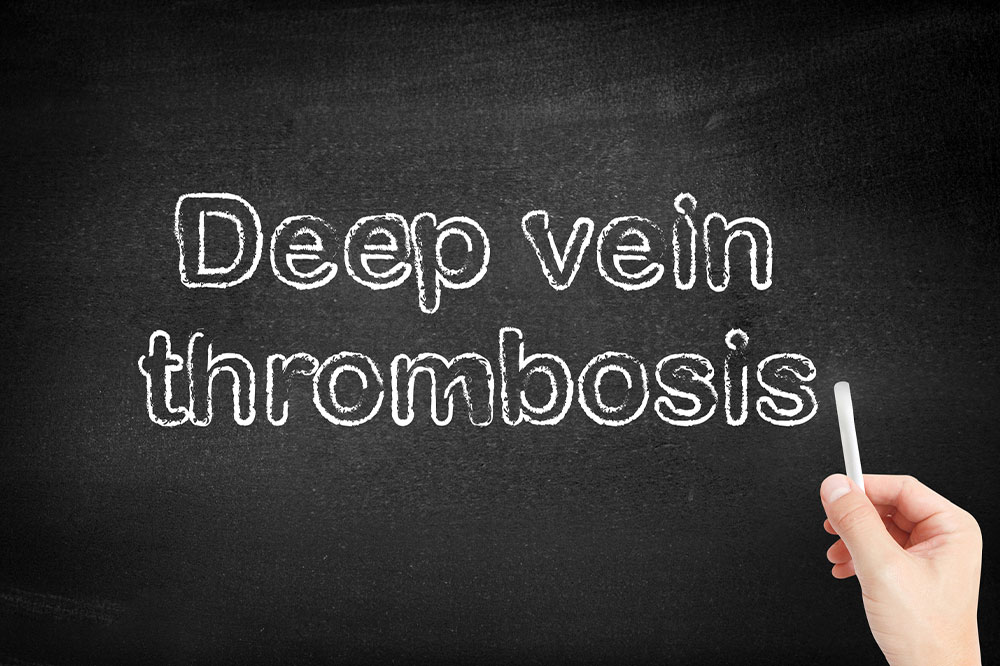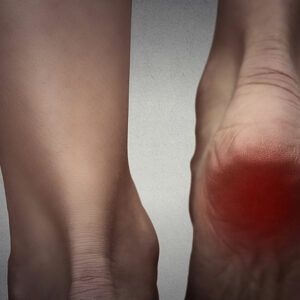Early signs and risk factors of deep vein thrombosis

Deep vein thrombosis, or DVT, is a condition that results from blood clots forming in one of the deep veins of the body. It is a serious condition that needs to be diagnosed as early as possible. However, only half the people with DVT experience the symptoms and early signs that can facilitate an early effective diagnosis. But those with a high risk of DVT may experience certain early signs.
Early signs of deep vein thrombosis
Some common early signs and symptoms of deep vein thrombosis include the following.
There is swelling in one side of the ankle, foot, or leg.
There is severe pain in the affected leg that causes cramping in the calf area.
A person may also experience debilitating pain around the ankle or the affected foot.
The skin around the area where clotting has started feels warmer.
The skin around and over the affected area starts to appear reddish or blushing and looks pale.
When the blood starts to clot in the upper body, especially in one of the arms, a person may experience the following early signs of deep vein thrombosis.
There is pain in the neck.
There is discomfort or pain in the shoulder of the affected arm.
The affected arm or hand becomes swollen.
The skin over the affected arm turns blue or dark, like a bruise.
The person may experience pain that radiates from the arms to the forearms.
There is a loss of strength in the hand of the affected arm.
It is observed that in most cases, diagnosis of DVT doesn’t happen until a person has undergone an emergency procedure for a pulmonary embolism. This happens when a blood clot due to DVT moves from the leg or other body parts to the lungs. In such cases, doctors usually use venous stenting methods to clear out the blood clots.
Risk factors for developing deep vein thrombosis
Those with these common risk factors need to keep a watch on the early signs of deep vein thrombosis.
Age
It is generally observed that those above the age of 60 are at a higher risk of DVT. However, the condition may occur at any age.
Sedentary lifestyle
Those who have a very sedentary lifestyle with a lack of movement may also develop deep vein thrombosis. With the muscles of the calf not contracting due to no minimal movement, the flow of blood becomes restricted. As a result, those who have to sit or drive for a long time are at high risk.
Surgery or vein injury
The risk of developing blood clots increases if there is any injury or surgery to the veins.
Pregnancy
In most cases, there is an increase in the pressure on the veins of the legs and pelvic region during pregnancy. As a result, some pregnant women are usually at risk of developing blood clots in these veins.
Preexisting health conditions
Specific preexisting health issues, such as cardiovascular diseases, inflammatory bowel disease, ulcerative colitis, or Crohn’s disease, disrupt the blood flow, leading to blood clot formation.
Genetics
In certain cases, someone may have a genetic makeup that causes their blood to clot easily. When combined with other risk factors, these genetic conditions may make the person more prone to DVT.
To avoid pulmonary embolism, it is important to treat DVT as soon as it is diagnosed. Treatments include the use of anticoagulants or blood thinners and compression stockings. In some cases, invasive treatments may be needed.



